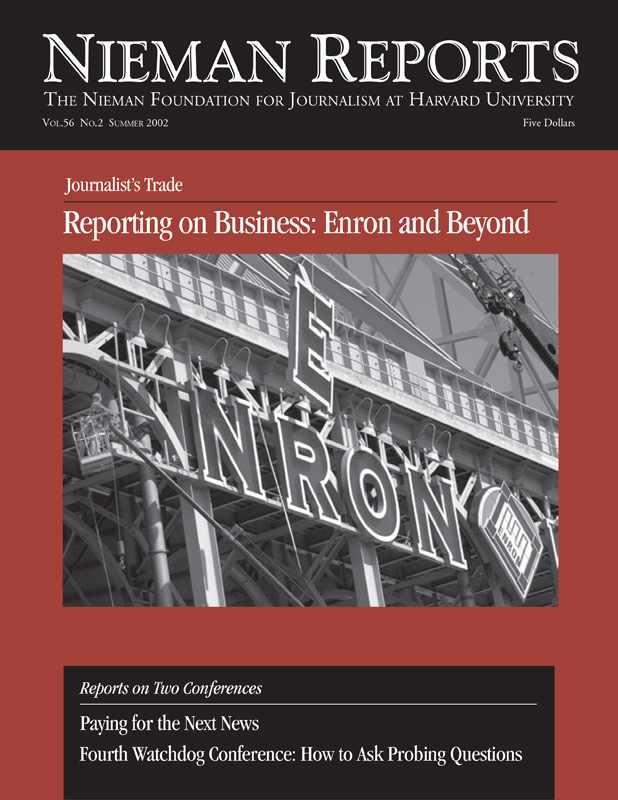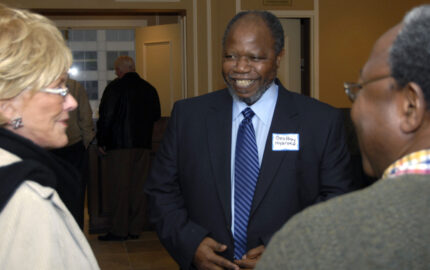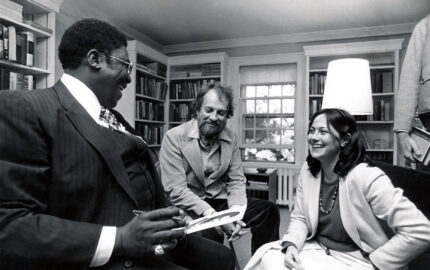One day this spring, I watched a Washington, D.C. high school newspaper editor defend her decision to put the murder of two male students on the front page.
The principal disagreed. He reviewed the pages before the paper went to the printer and wanted the killings to go inside the paper. He suggested that the editor place a story about a college scholarship winner on the front page. In the end, the editor came up with a compromise. She put both stories on the front page.
Three years ago, this school didn’t have a student paper. With the help of The Washington Post’s Young Journalists Development Project, a program I am assistant director of, the school paper has been revitalized. It is one of 17 papers in the Washington area that benefit from the support of the Post and the help of Post volunteers who visit the students and newspaper advisers to assist them in producing quality student-run newspapers. In addition to volunteer help, the Post provides financial assistance and donates computer equipment and other resources to the schools.
The high school program, which started in 1997, is becoming a model for other major news organizations that want to help create a new generation of journalists. This year, the Knight Foundation awarded a $175,000 grant to the program to prepare a handbook to guide newspapers and television stations in setting up high school student media programs.
The goal of the Post’s high school program is to help cultivate and develop talented students who will be attracted to newspaper careers. A special concern is improving diversity in major newsrooms by reaching out to minorities who are underrepresented in the journalism profession. Minorities represent 12 percent of newsroom professionals, according to a recent study by the American Society of Newspaper Editors.
Since the Post program was created four years ago, under the leadership of former columnist Dorothy Gilliam, nearly 50 students have chosen to pursue journalism degrees in college. Two of those students have become journalists for major news organizations.
The high school program started with one D.C. high school. Today, the program has expanded to 12 high schools in the District; three in Prince George’s County, in Maryland, and two in Fairfax County, in Virginia.
Three years ago, I became a volunteer in the program. I was a reporter on the sports staff at the time. A school that did not have a paper in my former Southeast neighborhood wanted to join the Post program, and I wanted to help. I had no idea what I was getting into. All I knew was that I loved working on my school paper in junior high school in Portsmouth, Virginia. I thought helping the newspaper adviser and students at a high school would be fun.
In February 2000, I led a six-member team of reporters and editors who visited the journalism class at lunch-time once a week. The adviser, a recent college graduate and new English teacher, had spent nearly the entire first semester trying to get the students to produce an issue of the paper. It finally came out in February. It was a good start. But I knew they could do better.
Over the next four months, my team members and I tutored, begged and encouraged the students to produce three more issues of the paper. The Post donated some used computer equipment to the class so the students could put their stories on disks. Because the classroom lacked adequate equipment to lay out the paper, one volunteer, who worked on the Post news desk, stayed after her midnight shift to design the school paper. She pulled three all nighters that school year.
My team members knew our volunteer efforts were worth it. We have a passion for journalism and were pleased to see how excited the students were when they saw their stories in print. The student body began to look forward to the papers.
When the school year ended, my plan was to volunteer at the high school the following year. But Post editors had other plans. They persuaded me to become assistant director of the program, a position I took in October 2000.
The job has given me an opportunity to play an important role in the nurturing of future journalists. In the spring of 2001, I was a visiting professor in the mass media arts department at Hampton University. I also help coordinate The Washington Post Semester, a course offered to journalism students at local universities.
This spring I returned to the high school where I had first volunteered and watched the student editor defend her decision to put the murder of her schoolmates on the front page. I marveled at how far that school paper has come.
Despite having two different principals and newspaper advisers in the past three years, the school paper has survived. The Post volunteers continue to visit the school on a regular basis. Our program has donated more equipment and software to the school, so the students now can do their own layout of the paper. The newspaper staff has grown stronger. The students are tackling some key issues that affect them. As they learn how to report and write stories, they are learning how to stand up for their beliefs.
I was proud of the student newspaper editor and her classmates, who joined her in the principal’s office that day. They had no idea that sessions like the one they were having with the principal take place in major newsrooms across the country as editors gather in daily meetings to decide what stories will appear on the next day’s front page. All they knew was that many of their classmates were mourning the death of the two students—an important news story that deserved to go on the front page.
Athelia Knight, a 1986 Nieman Fellow, is assistant director of The Washington Post’s Young Journalists Development Project.



